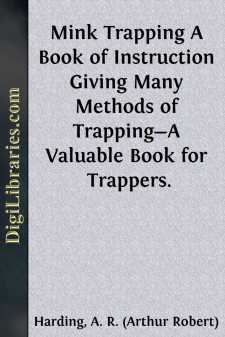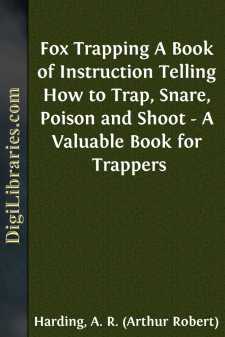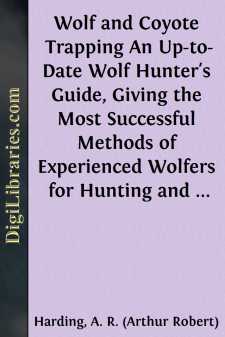Categories
- Antiques & Collectibles 13
- Architecture 36
- Art 48
- Bibles 22
- Biography & Autobiography 813
- Body, Mind & Spirit 142
- Business & Economics 28
- Children's Books 16
- Children's Fiction 13
- Computers 4
- Cooking 94
- Crafts & Hobbies 4
- Drama 346
- Education 46
- Family & Relationships 57
- Fiction 11829
- Games 19
- Gardening 17
- Health & Fitness 34
- History 1377
- House & Home 1
- Humor 147
- Juvenile Fiction 1873
- Juvenile Nonfiction 202
- Language Arts & Disciplines 88
- Law 16
- Literary Collections 686
- Literary Criticism 179
- Mathematics 13
- Medical 41
- Music 40
- Nature 179
- Non-Classifiable 1768
- Performing Arts 7
- Periodicals 1453
- Philosophy 64
- Photography 2
- Poetry 896
- Political Science 203
- Psychology 42
- Reference 154
- Religion 513
- Science 126
- Self-Help 84
- Social Science 81
- Sports & Recreation 34
- Study Aids 3
- Technology & Engineering 59
- Transportation 23
- Travel 463
- True Crime 29
A. R. (Arthur Robert) Harding
Arthur Robert Harding was an influential early 20th-century American outdoor writer and publisher, renowned for his expertise in hunting, trapping, and fishing. He authored several comprehensive guides, including "Fur-Farming for Profit" and "Fox Trapping," which became essential references for trappers and outdoors enthusiasts of his time. Harding's practical knowledge and hands-on experience significantly contributed to the dissemination of outdoor skills and conservation practices.
Author's Books:
Sort by:
CHAPTER I.GENERAL INFORMATION. Mink are found in nearly all parts of America living along creeks, rivers, lakes and ponds. While strictly speaking they are not a water animal, yet their traveling for food and otherwise is mainly near the water, so that the trapper finds this the best place to set his traps. The mink is fond of fish, rabbit, squirrel, birds, mice, etc. In some sections they eat muskrat,...
more...
CHAPTER 1. SUPPLY AND DEMAND. For years there has been a belief that the supply of fur-bearing animals would soon be inadequate to the demand. This belief is well founded and is apparent when the fact is known that the natural haunts and homes of the fur-producing animals are becoming less each year. The draining of swamps and marshes is destroying the homes and breeding places of muskrat and to a...
more...
CHAPTER I.GENERAL INFORMATION. Foxes are found in all parts of America, but probably most numerous in the New England States and parts of Canada. The range of the red is from Virginia to Alaska; grey, Southern and Southwestern States; cross, Northern New Jersey to Manitoba; black, Alaska, and the territories several hundred miles to the South and East; swift, the prairies or Great Plains; white and...
more...
CHAPTER I.SEWELL NEWHOUSE. Mr. Sewell Newhouse, the inventor of the Newhouse Trap grew up surrounded by the Iroquois Indians of the Oneida Tribe; that tribe which alone of all the Red men cast in their lot with the Americans in our great struggle for liberty. MR. SEWELL NEWHOUSE. At an early age he learned the gunsmith's trade. In those days guns were all made by hand, and in small shops. Mr....
more...
CHAPTER I.THE TIMBER WOLF. Wolves of all species belong to that class of animals known as the dog family, the members of which are considered to be the most intelligent of brute animals. They are found, in one species or another, in almost every part of the world. They are strictly carnivorous and are beyond all doubt the most destructive of all wild animals. In general appearance the wolf resembles a...
more...
CHAPTER I.PLANTS AS A SOURCE OF REVENUE. With the single exception of ginseng, the hundred of plants whose roots are used for medical purposes, America is the main market and user. Ginseng is used mainly by the Chinese. The thickly inhabited Chinese Empire is where the American ginseng is principally used. To what uses it is put may be briefly stated, as a superstitious beverage. The roots with certain...
more...
CHAPTER I.BUILDING DEADFALLS. During the centuries that trapping has been carried on, not only in America, but thruout the entire world, various kinds of traps and snares have been in use and taken by all classes of trappers and in all sections the home-made traps are of great numbers. The number of furs caught each year is large. The above was said by a trapper some years ago who has spent upwards of...
more...








